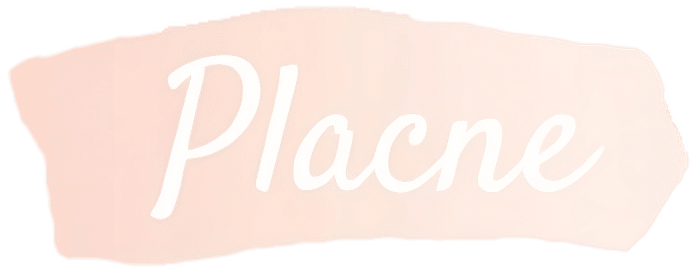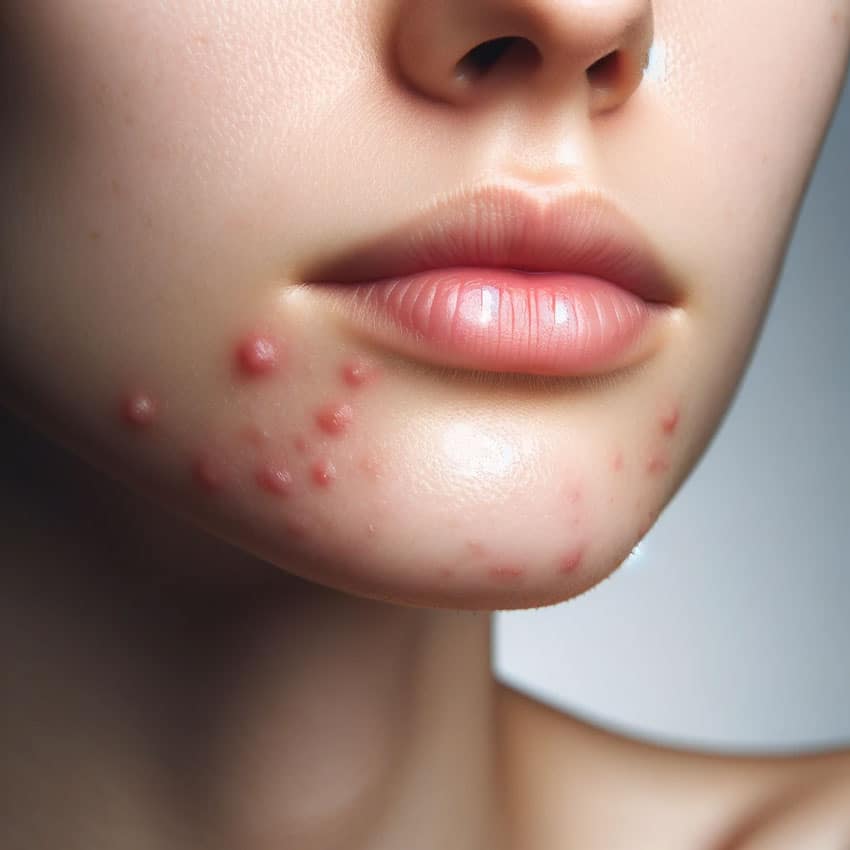Chin acne is a common skin condition that affects both teenagers and adults. While it can be frustrating and embarrassing, there are several ways to effectively treat and prevent chin acne.
In this article, we will explore various treatments and prevention methods to help you achieve clear, healthy skin.
Understanding Chin Acne
Chin acne is a common skin condition that affects many people, especially women. It is a type of acne that appears on the chin, jawline, and neck area.
Chin acne is caused by a combination of factors, including excess sebum production, clogged pores, bacteria, and hormonal fluctuations.
Sebum is an oily substance produced by the sebaceous glands in the skin. When the sebaceous glands produce too much sebum, it can mix with dead skin cells and clog the pores, leading to the formation of blackheads and whiteheads.
Bacteria can then infect the clogged pores, causing inflammation and the formation of cystic pimples and nodules.
Hormonal fluctuations, especially in androgens, can also contribute to chin acne. Androgens are male hormones that are present in both men and women. When androgen levels increase, it can cause the sebaceous glands to produce more sebum, leading to clogged pores and acne breakouts.
Chin acne can be frustrating to deal with, but there are several treatments and preventative measures that can help.
Cleansing the skin regularly with a gentle cleanser can help remove excess oil and bacteria from the skin. Using non-comedogenic skincare products can also help prevent clogged pores.
In some cases, hormonal acne may require medical treatment. Dermatologists may prescribe topical or oral medications to help regulate hormone levels and reduce acne breakouts. It is important to consult a dermatologist before starting any new acne treatment regimen.
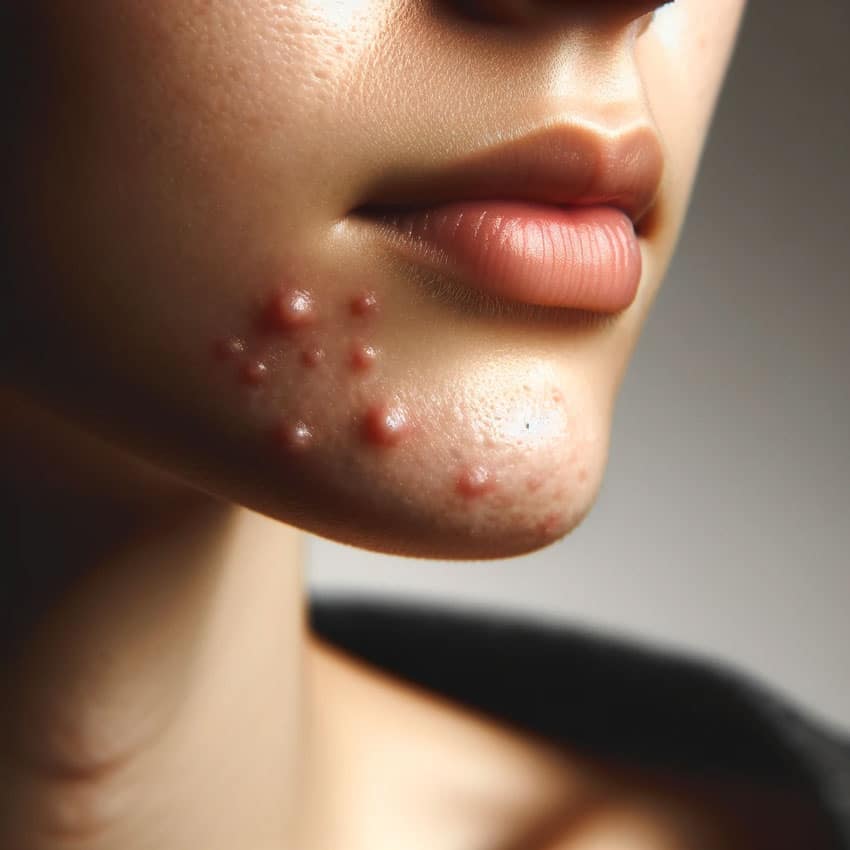
Factors Contributing to Chin Acne
Chin acne is a common skin condition that affects both teenagers and adults. It can be caused by a variety of factors, including hormonal fluctuations, stress, diet, sweat, ingrown hairs, and acne mechanica. Here are some of the most common factors that contribute to chin acne:
Hormonal Fluctuations
Hormonal fluctuations are one of the most common causes of chin acne. These fluctuations can occur during the menstrual cycle, menopause, or due to hormonal imbalances such as polycystic ovary syndrome. Hormonal acne often appears as deep, cystic pimples on the chin and jawline.
Stress
Stress can also contribute to chin acne. When the body is under stress, it produces more cortisol, a hormone that can increase sebum production and lead to acne breakouts. Stress can also cause people to touch their face more frequently, which can transfer bacteria and oil from the hands to the face.
Diet
Diet is another factor that can contribute to chin acne. Some studies have suggested that a diet high in dairy products and sugar can increase the risk of acne breakouts. Additionally, eating foods with a high glycemic index can cause spikes in insulin levels, which can lead to increased sebum production and acne breakouts.
Sweat
Sweat can also contribute to chin acne. When sweat mixes with bacteria and oil on the skin, it can clog pores and lead to acne breakouts. This is especially true for people who wear tight clothing or helmets that trap sweat against the skin.
Ingrown Hairs
Ingrown hairs can also cause chin acne. When hair follicles become clogged with dead skin cells and oil, they can become inflamed and infected, leading to acne breakouts. This is especially true for people who shave their chin or jawline.
Acne Mechanica
Acne mechanica is a type of acne that is caused by friction or pressure on the skin. This can be caused by wearing tight clothing, carrying heavy bags, or wearing a mask for extended periods of time. Acne mechanica often appears as small, red bumps on the chin and jawline.
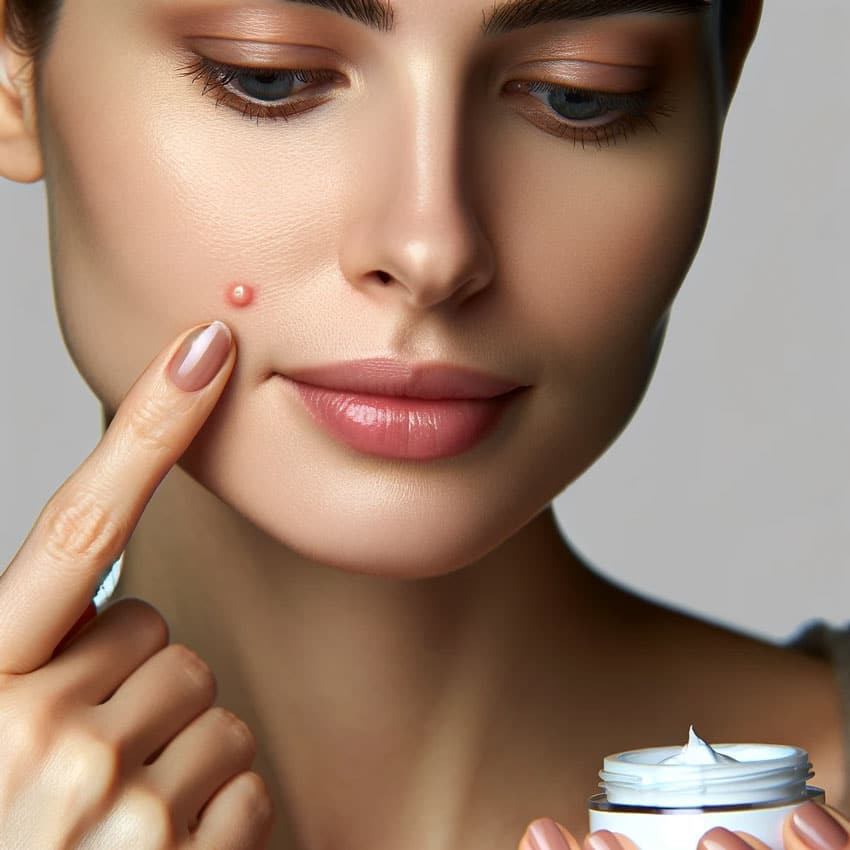
Preventive Measures and Self-Care
Preventing chin acne involves taking self-care measures that promote good skin hygiene and avoiding triggers that can cause acne breakouts. Here are some preventive measures that can help:
- Maintain a consistent skincare routine: A consistent skincare routine can help prevent acne breakouts. Cleansing the skin twice a day, in the morning and before bed, can help remove dirt, oil, and makeup that can clog pores and cause acne. Using a gentle cleanser is recommended, as harsh cleansers can strip the skin of its natural oils and cause irritation.
- Protective barrier: Using a natural oil like jojoba oil can help protect the skin’s natural barrier and prevent acne breakouts. Jojoba oil is similar to the natural oils produced by the skin and can help regulate oil production. It can also help soothe and moisturize the skin.
- Exfoliation: Exfoliating the skin once or twice a week can help remove dead skin cells that can clog pores and cause acne breakouts. However, it is important to use a gentle exfoliator, as harsh exfoliators can cause irritation and inflammation.
- Sunscreen: Using a broad-spectrum sunscreen with an SPF of at least 30 can help protect the skin from the harmful effects of the sun. Sun damage can cause inflammation and increase the risk of acne breakouts.
- Hygiene: Maintaining good hygiene can help prevent acne breakouts. Washing the face and hands regularly, avoiding touching the face, and changing pillowcases and towels frequently can help prevent the spread of bacteria that can cause acne.
- Makeup: Using non-comedogenic makeup can help prevent acne breakouts. Non-comedogenic makeup is formulated to not clog pores and cause acne.
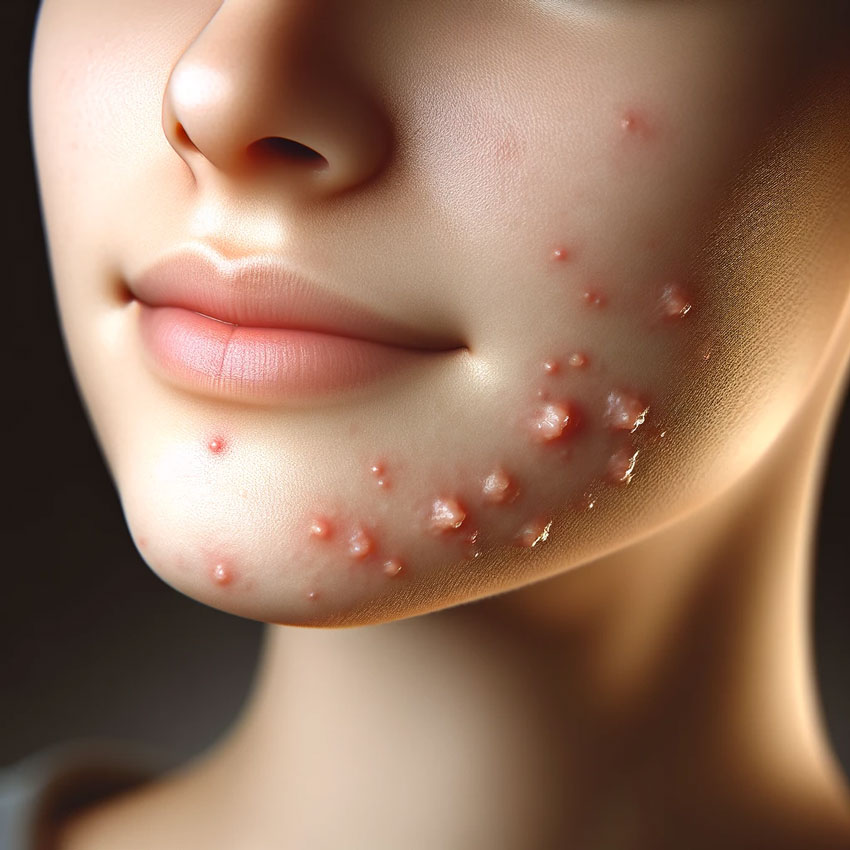
Over-the-Counter Treatments
Over-the-counter products can be effective in treating mild to moderate chin acne. Some of the most common active ingredients in these products include benzoyl peroxide, salicylic acid, and retinoids.
Benzoyl peroxide is an antibacterial agent that works by killing the bacteria that cause acne. It also helps to reduce inflammation and unclog pores. Products containing benzoyl peroxide are available in different strengths, ranging from 2.5% to 10%.
It is important to start with a lower-strength product and gradually increase the strength to avoid skin irritation.
Salicylic acid is a chemical exfoliant that helps to unclog pores and reduce inflammation. It is especially effective for treating blackheads and whiteheads. Salicylic acid is available in different strengths, ranging from 0.5% to 2%.
It is important to note that salicylic acid can be drying, so it is important to use a moisturizer after applying the product.
Retinoids are a type of vitamin A derivative that helps to unclog pores and reduce inflammation. They are also effective in reducing the appearance of fine lines and wrinkles. Topical retinoids are available over the counter in lower strengths, while higher strengths require a prescription.
Spot treatments and pimple patches are also popular over-the-counter treatments for chin acne. Spot treatments contain a higher concentration of active ingredients and are designed to be applied directly to individual pimples.
Pimple patches are hydrocolloid patches that work by absorbing excess oil and pus from pimples and reducing inflammation.
Tea tree oil is a natural ingredient that has antibacterial properties and can be effective in treating mild to moderate acne. However, it is important to use caution when using tea tree oil, as it can cause skin irritation in some people.
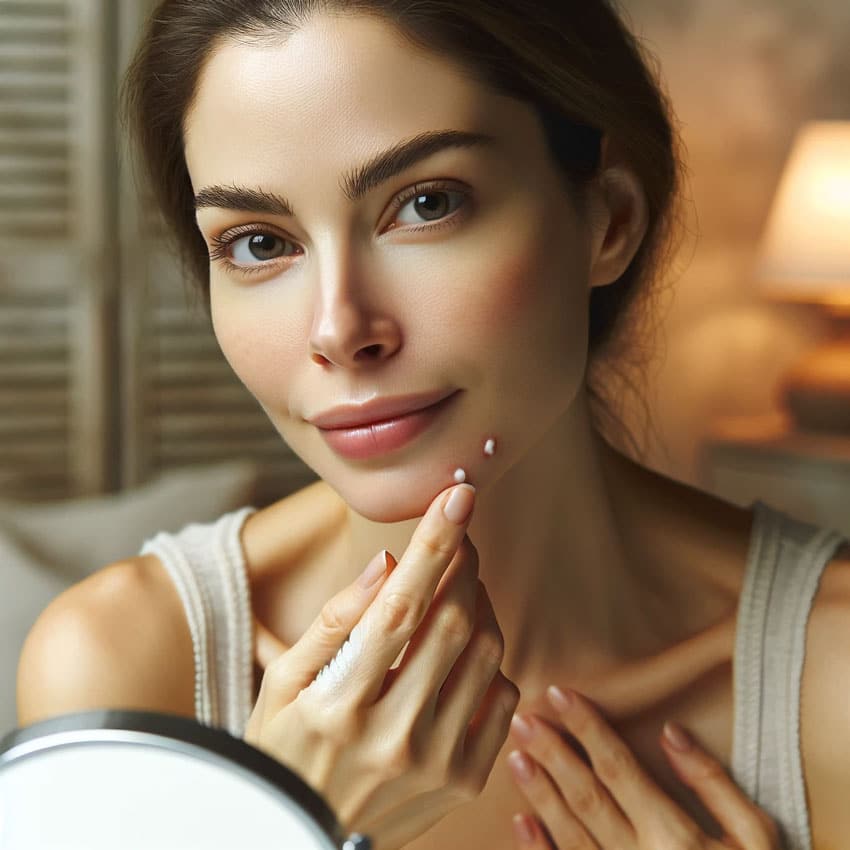
Professional Treatments and Consultations
While over-the-counter treatments can be effective for mild cases of chin acne, more severe cases may require professional treatments and consultations with a dermatologist. A dermatologist can help determine the underlying cause of chin acne and recommend the most appropriate treatment.
Inflammation is a common cause of chin acne, and a dermatologist may recommend antibiotics to reduce inflammation and prevent scarring. Oral antibiotics such as tetracycline, doxycycline, and minocycline can be effective in treating chin acne.
Topical retinoids such as adapalene can also be used to reduce inflammation and prevent new breakouts.
Isotretinoin is a prescription medication that can be used to treat severe cases of chin acne. This medication works by reducing the amount of oil produced by the skin and can be effective in preventing scarring.
Spironolactone is another medication that can be used to treat chin acne in women. It works by blocking androgen hormones, which can contribute to acne.
Chemical peels can also be effective in treating chin acne. These peels use a solution to remove the outer layer of skin, which can help reduce the appearance of acne scars.
Laser treatment can also be used to treat chin acne, particularly in cases where scarring is a concern.
Birth control pills can be effective in treating chin acne in women, particularly those with hormonal imbalances. Estrogen-containing birth control pills can help regulate hormone levels and reduce the severity of acne. Women with polycystic ovary syndrome (PCOS) may also benefit from birth control pills.
For those with pustules or cysts, a dermatologist may recommend extraction or drainage. Ointments and light therapy can also be effective in treating chin acne.
